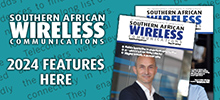02 March 2022
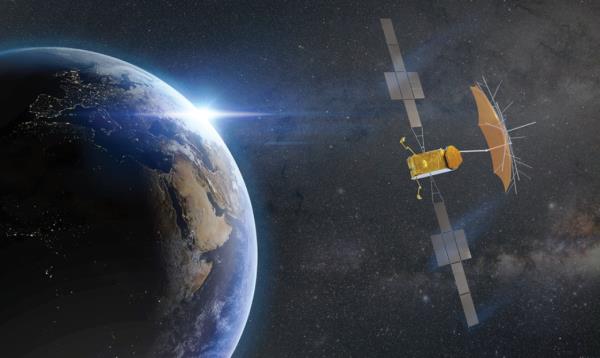
In recent years, the night sky has changed faster than at any time in human history. But, are we really at the dawn of a space race and will the trend continue in 2022 and beyond? By Robert Shepherd
Readers of a certain age will remember a very different “Space Race” from their youth. You know, the 20th-century competition between Cold War adversaries the United States and what was then the Soviet Union to achieve superior spaceflight capability? For younger readers, the two superpowers were racing to put the first man in space and on the moon.
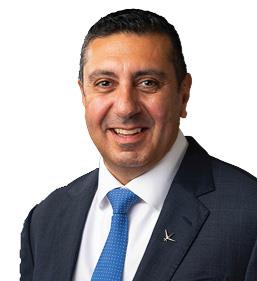
Amit Somani, Yahsat
“We are witnessing a revolution of sorts, involving an increasing number of players – small start-ups, or larger players, either well-established players such as Yahsat or Inmarsat, or new entrants such as Elon Musk and Jeff Bezos”
Decades later, while Russia is focusing more on terra firma and limiting NATO’s sphere of influence, countless satellites continue to enter the cosmos at an incredible rate. Add to that the fact billionaire entrepreneurs Sir Richard Branson, Jeff Bezos and Elon Musk have all unveiled space strategies in the past year – be it internet connectivity, space tourism, or just going up there because they can – it has been described by media and those in the industry as a modern-day space race.

Hans Geldenhuys,
Intelsat
“Africa is one of the world’s most competitive markets, as no fewer than 20 active operators have wide-beam satellite coverage of the region”
Casimir Berthier Fotso Chatue, CEO and founder, Afrikanet Group and GOSAT eAfrica Telecommunications, a satellite internet services provider, says the industry was considered to be static in terms of technology improvement over the last two decades. However, he says, there has seen a huge transformation over the last five years when better results and stability on hardware saw the explosion of several satellite operators investing on new GEO HTS (Hight Throughput Satellite) to provide ka-band and on LEO satellite to offer more speed and low latency.
“Our business has shifted from providing corporate C-Band or ku-band based on big conventional antenna size above 1.80 or 2.40m to very compact antenna size around 74cm only, with 5 times more capacity throughput, more speed and indeed low cost,” Chatue adds. “We had to change our business model and bid on B2C of our service offer instead of just banking on B2B for corporates.”
Chatue argues that partnerships his company has forged since it started operations in 1999, with the majors ka-band Satellite owner leaders in UK and in the EU, puts it in “a very favourable position” to continue getting the best satellite service type for its community in Africa. “The broadband speed demand in our African market is growing two times every year and today, with our customer bases around the 12 African countries that we serve, we are excited with what is coming next on the LEO/OneWeb and LEO/Starlink Elon Musk that will provide nearly 100 times more speed and this will allow us to get the best without compromising our position as independent broadband service providers,” he says.
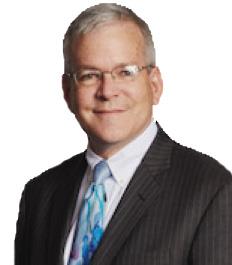
Peter Hadinger, Inmarsat
“Using greater bandwidth, combined with greater power and unlimited beam routing that can match demand second-by-second, even the most congested areas will experience enhanced connectivity”
To list all the about to be and recently launched satellites – from the last 12 months alone – would require yards of text, but some have secured more press coverage than others.
Musk’s SpaceX-operated Starlink is arguably the most talked satellite service in consumer media, but the one that has been described by industry luminaries as the world’s “most sophisticated commercial communications satellite” is Inmarsat’s I-6 F1.
“Inmarsat has provided global coverage for many years and has put our most concentrated capacity in both L- and Ka-bands over Africa,” says Peter Hadinger, chief technology officer, Inmarsat. “I-6 F1 launched in December 2022, will continue this commitment - serving most of Africa and all of south Asia plus the Asia-Pacific region. Inmarsat will publish I-6 F1’s coverage map once it is operational in early 2023. I-6 F2 will be launched in early 2023 and will cover all of Africa - further increasing our capacity there.”
But why is there so much hype surrounding it?
“Using greater bandwidth, combined with greater power and unlimited beam routing that can match demand second-by-second, even the most congested areas will experience enhanced connectivity,” he adds.
Not only are more satellites being launched at a higher rate than ever before, but they are becoming more sophisticated. Is that the clearest indication that we are now firmly in a 21st Century space race?
“More than a space race, these launches and the plethora of satellite constellations indicates that the use of space-based assets as infrastructure for the deployment of broadband services is starting to become mainstream,” argues Ali Ahmed Al-Kuwari president and CEO, Es’hailSat. “The erstwhile space race was driven by more of a military and cold war backdrop but this time around, it is commercial competitiveness combined with national pride that is driving this gold rush.”
Sharyn Nerenberg, vice corporate marketing & communications, Hughes, “wouldn’t call it a new space race” as much as an imperative to bring broadband to unserved markets. “These are large, unserved markets that can be well served by satellite because it reaches places where cable and fibre cannot,” she continues. “Research firm ABI predicts the serviceable addressable market for satellite connectivity in Asia and Africa will grow to 169 million and 54.2 million, respectively, by 2026 – much larger an opportunity than in North or South America (29.1 million and 28.2 million, respectively). Africa and Asia have been important markets for Hughes for many years, as we supply satellite ground system technology to many operators in these markets (for example, Omantel in Oman, NCTS in Egypt, and DTP in Indonesia). Our India subsidiary is the largest VSAT operator in that market, and the changing regulatory climate there is opening up new opportunities for satellite services.”

Casimir Berthier, Afrikanet
Group and GOSAT eAfrica
“We had to change our business model and bid on B2C of our service offer instead of just banking on B2B for corporates.”
Another big player in the satellite universe is Middle East-headquartered Yahsat, which offers multi-mission satellite in Africa and over 150 countries worldwide.
Amit Somani, the company’s chief strategy officer admits “it is a very exciting time for the global space industry,” and that from space travel to earth observation to satellite communications, “we are witnessing a revolution of sorts, involving an increasing number of players – small start-ups, or larger players, either well-established players such as Yahsat or Inmarsat, or new entrants such as Elon Musk and Jeff Bezos”.
That said, Somani, like Nerenberg, says he “would not consider it a race per se, but an opportunity to use space even more than before to provide critical connectivity to nations, businesses, communities and individuals on a global scale”.
He continues: “Thanks to evolutions in technology, space is becoming more affordable, and nations and enterprises are realising the massive potential of space.”
According to the latest ITU data, 2.9 billion people remain offline, 96% of whom live in developing countries. What’s more, the coverage gap is significant in some regions like Africa where 18 % of the rural population is not covered at all, says Hans Geldenhuys, director, sales-Africa, Intelsat.
“It is therefore necessary to accelerate efforts to achieve digital inclusion at all levels and satellite plays an important role in this,” Geldenhuys continues. “Africa is one of the world’s most competitive markets, as no fewer than 20 active operators have wide-beam satellite coverage of the region. Also, the African space industry is continuously growing in capacity and investment and we’re seeing the emergence of new government space programmes. However, there is a growing connectivity need and Inmarsat, Starlink and Intelsat’s Unified Network, the world’s first multi-layer 5G software-defined network, help respond to it.”
It’s not just the wealthier nations that are behind these satellite launches. Uganda and Kenya have been behind some of the most recent ones. Even Iran harbours ambitions in this space.
So, if it’s not a space race per se, why are so many countries investing in the technology all of a sudden?
Richard Swardh, senior vice president premium enterprise and mobile operators, Comtech Satellite Network Technologies believes the want and the need from governments to use space has always been there. “Whether it is for national security interests, earth observation or internet connectivity, what has changed over the last few years is that the cost of launching a satellite has dropped dramatically and there is a greater selection of satellites at price points that are now within reach for more sovereign nations. This is a trend that will continue and we will see more and more countries launch their own satellites.”
Martin Jarrold, vice president international programme development, GVF says each country is likely to want to enter this new space race to meet their own particular policy objectives and national requirements (in terms of enhanced communications capabilities, access to nationally relevant Earth observation/remote sensing data, etc.), “and there can be a myriad of facets to this”.
Jarrold adds that the number of smaller space-active nations, many more than just 10 years ago when, among African nations for example, Nigeria’s space agency, NASRDA, was the continent’s leading light in satellite remote sensing with the launch of NigeriaSat-2 and NigeriaSat-X. “With payloads of imagers for earth observation applications such as resource management, mapping and agricultural and disaster management, these two satellites were somewhat prescient of today’s even greater need for such orbital assets and have been followed by many other counties in Africa and elsewhere outside of the traditional space nations,” he says.
In addition to the small matter of national prestige and competing with their neighbours, Somani thinks there are other elements at play.
“Space is back on national agendas worldwide,” he says. “Firstly, from a security perspective, an increasing number of nations are looking to use space to enhance their military capabilities and national security, bringing sovereignty and autonomy in their critical communications. Secondly, from an economic perspective, they know that sovereign satellite infrastructure is required to provide critical communications and fast track digital development.”
Lastly, he says, countries perceive the launch and operation of national satellites as important in establishing technological credibility internationally and as a means to showcase national accomplishment domestically, while in parallel nurturing local STEM talent that can subsequently lead to other industrial development.

Sharyn Nerenberg,
Hughes
“This is the most exciting time in the space and satellite industry since the 1960s”
“In even the most advanced nations in terms of telecommunications infrastructure, significant gaps remain, so for those countries with less advanced infrastructure access to broadband is still very poor and therefore the digital divide is an unfortunate reality,” adds Somani. “Satellite increasingly is able to bridge this as part of a multi-technology national connectivity strategy and eco-system.”
For Al-Kuwari, the rationale behind so many launches “is quite like what was the competitive nature of access to geostationary orbital slots”, now governed by ITU and allotted to each country based on their needs.

Martin Jarrold, GVF
“This – the ‘Kessler Syndrome’ – describes rendering impractical many space activities and the use of satellites in LEO for generations to come”
“Every country wants to plant their flag in what is essentially a global common i.e. orbits both LEO & GEO being used for telecommunication and earth observation services,” he says. “Each country wants to exert its sovereignty in terms of its ability to utilise space-based services and not be dependent on any other country for critical communications or remote sensing type services. Not every commercial venture succeeds and more so in a difficult environment such as outer space and time will tell how many projects truly make it to orbit in a sustainable manner.”

Richard Swardh,
Comtech Satellite
Network Technologies
“Whether it is for national security interests, earth observation or internet connectivity, what has changed over the last few years is that the cost of launching a satellite has dropped dramatically and there is a greater selection of satellites at price points that are now within reach for more sovereign nations”
So far, we have, thankfully, managed the area of space near Earth without major incident -- even when military tests suddenly produce thousands of new bits of space junk.
Al-Kuwari points to the fact that there are an increasing number of government and non-government organisations who are highlighting these concerns. “It is imperative that nations of the world take the onus to not clog space, much like there are international treaties and agreements to ensure that the waters of the ocean are not clogged by any one country’s ships or fishing requirements,” he adds. “Longer term, the sustainable use of space will ensure that investments made today are not at risk because of debris collisions and that the space resources, which are for all mankind, are utilized in a fair and equitable manner.”
In any field, walk of life, industry, however, one wishes to describe it, the more entrants not only offer competitions, but also cause market saturation. In other words, there are far too many of them. The term synonymous with satellites in space is “clogging” or too much “space junk”.
The average person not familiar with satellites would be forgiven for thinking space has infinite, well, space – but it appears clogging is a genuine concern. After all, the atmosphere near-Earth has finite room for satellites to manoeuvre.
But how much of a concern is it? Or do we need to wait until it’s a tangible problem like the amount of plastic in the world’s oceans and seas?
Jarrold claims there’a an estimated 170 million man-made objects in space. Most is junk orbiting the Earth at altitudes that threaten humanity’s essential access to useful space. With the density of objects in LEO high enough to cause collisions between objects, he opines that this could cause a self-sustaining cascade, risking exponential increase in the amount of space debris as each collision generates more debris and leads to yet more collisions. “This – the ‘Kessler Syndrome’ – describes rendering impractical many space activities and the use of satellites in LEO for generations to come,” he adds.
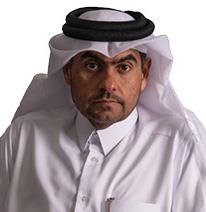
Ali Ahmed Al-Kuwari,
president and CEO,
Es’hailSat
“The erstwhile space race was driven by more of a military and Cold War backdrop, but this time around, it is commercial competitiveness combined with national pride that is driving this gold rush”
As things become more of a problem, international government intervention becomes the norm - just look at the unsuccessful COP26. However, the satellite universe doesn’t seem to be panicking just yet and instead focused on more satellites floating above.
Somani says the fact the number of active satellites has more than quadrupled in the last decade is indicative that “this is only the beginning (of a more heated and crowded atmospheres) – as LEO constellations materialise and new applications and uses cases are enabled, we could see thousands and thousands of active satellites”.
Jarrold envisages that the space race will be exemplified in multiple spheres, for example: “In the commercial sphere (in satellite communications and Earth observation), government sphere (in increasing numbers of national space agencies), the military sphere (in various types of anti-satellite – A-sat – technology), the research and technology sphere (in satellite future technology demonstrator projects, orbit-based industrial product development and manufacturing in pharmaceuticals and other sectors), the space resources management sphere (orbital debris removal and other debris mitigations, mission extension missions and automated satellite repair, orbital tow trucking) and not forgetting in the entertainment sphere (multi-million-dollar-ticket sub-orbital joyrides and space hotels).”
Al-Kuwari concurs but warns that as we are starting to see with some of the early SPACs, “there will be a certain reality check” that will have to apply to ventures that are trying to solve a problem that may not exist in the first place. “If stock markets are any indication of the availability of funding, it is obvious that there is a good amount of investment out there that is looking for high growth ventures, something that space-based companies promise,” he says. “However, the ground realities tend to be very different and when it comes to getting market access, clearing local regulations and dealing with technology limitations of non-standard telecom equipment, a lot of ideas need more work than is initially anticipated.”
Jarrold also argues that the international policy discussion and regulatory environment will also become more “heated” during the next year. “Nations, international agencies and organisations and commercial entities (will) become further embroiled in dialogue about not only long-standing issues concerning spectrum access rights and radio frequency interference issues, but also regulation on orbital debris and mitigating the potential of the ‘Kessler Syndrome’, as well as attempts to prevent A-sat activity,” he adds.
Like the others, Nerenberg says she “would not be surprised to hear about new entrants” because “this is the most exciting time in the space and satellite industry since the 1960s”.
There is no doubt the satellite industry has, is and will continue to play a critical role in achieving universal connectivity. Geldenhuys says this is because satellites are uniquely positioned to bring reliable connectivity quickly and cost-effectively to hundreds of Wi-Fi access points and cell sites – no matter how rural or hard-to-reach the location.
“This is why we work closely with governments around the world as we believe that greater public-private cooperation will enable the ability to build a more digitally inclusive society,” he adds. “Their perfect understanding of local requirements, combined with our 50+ year expertise, mean that we can deliver connectivity quickly and cost-effectively where it is most needed.”
The race has only just begun.





